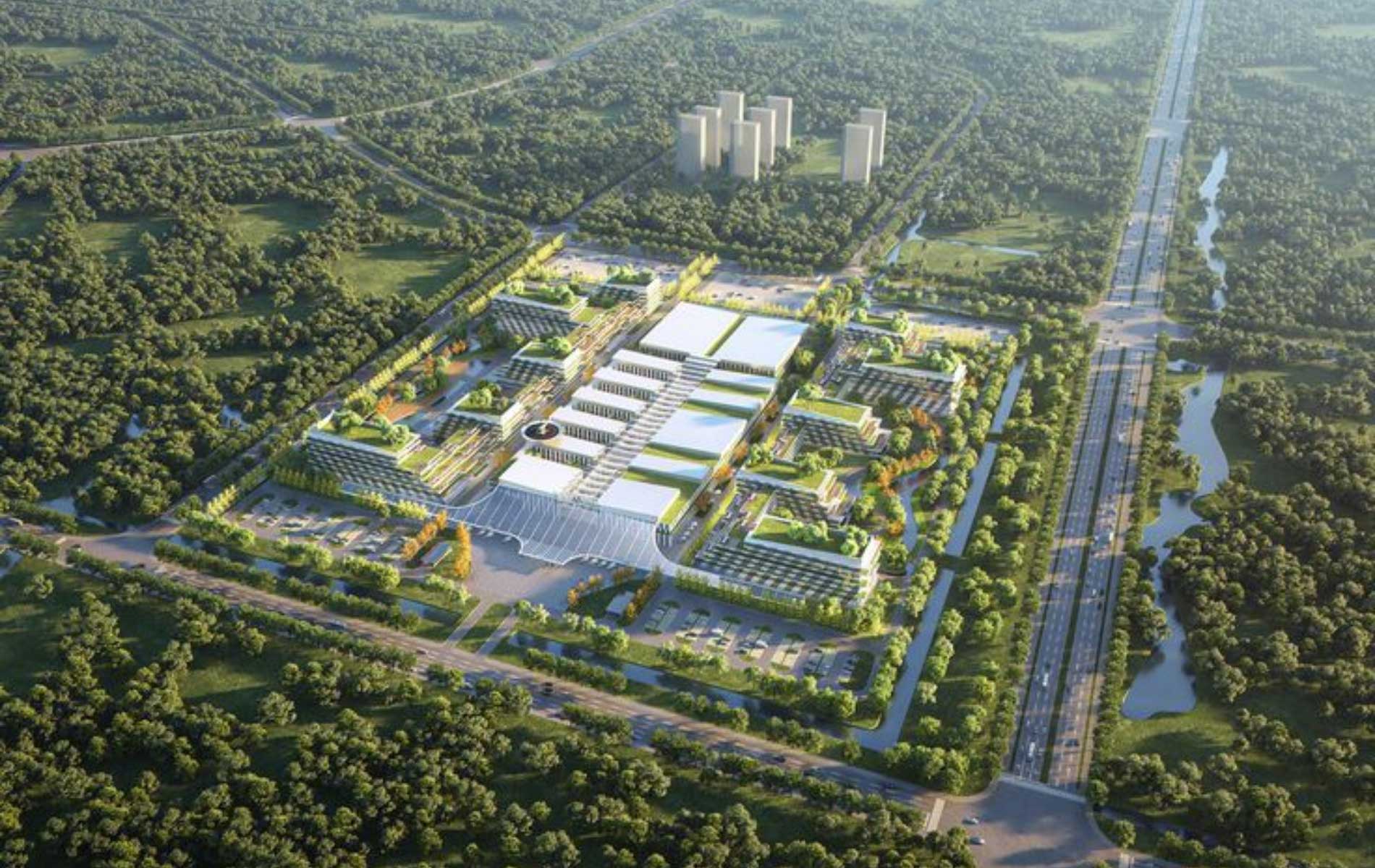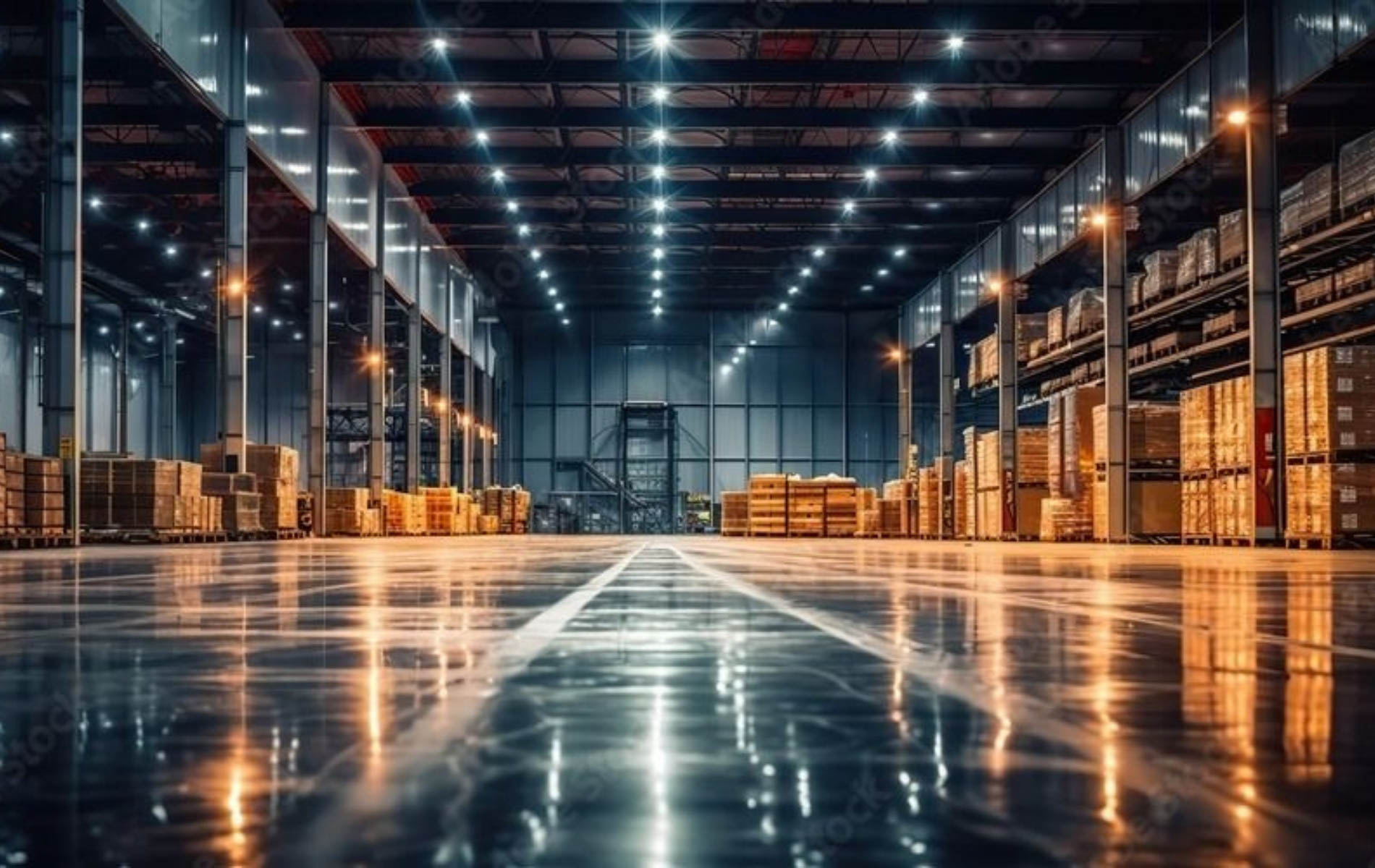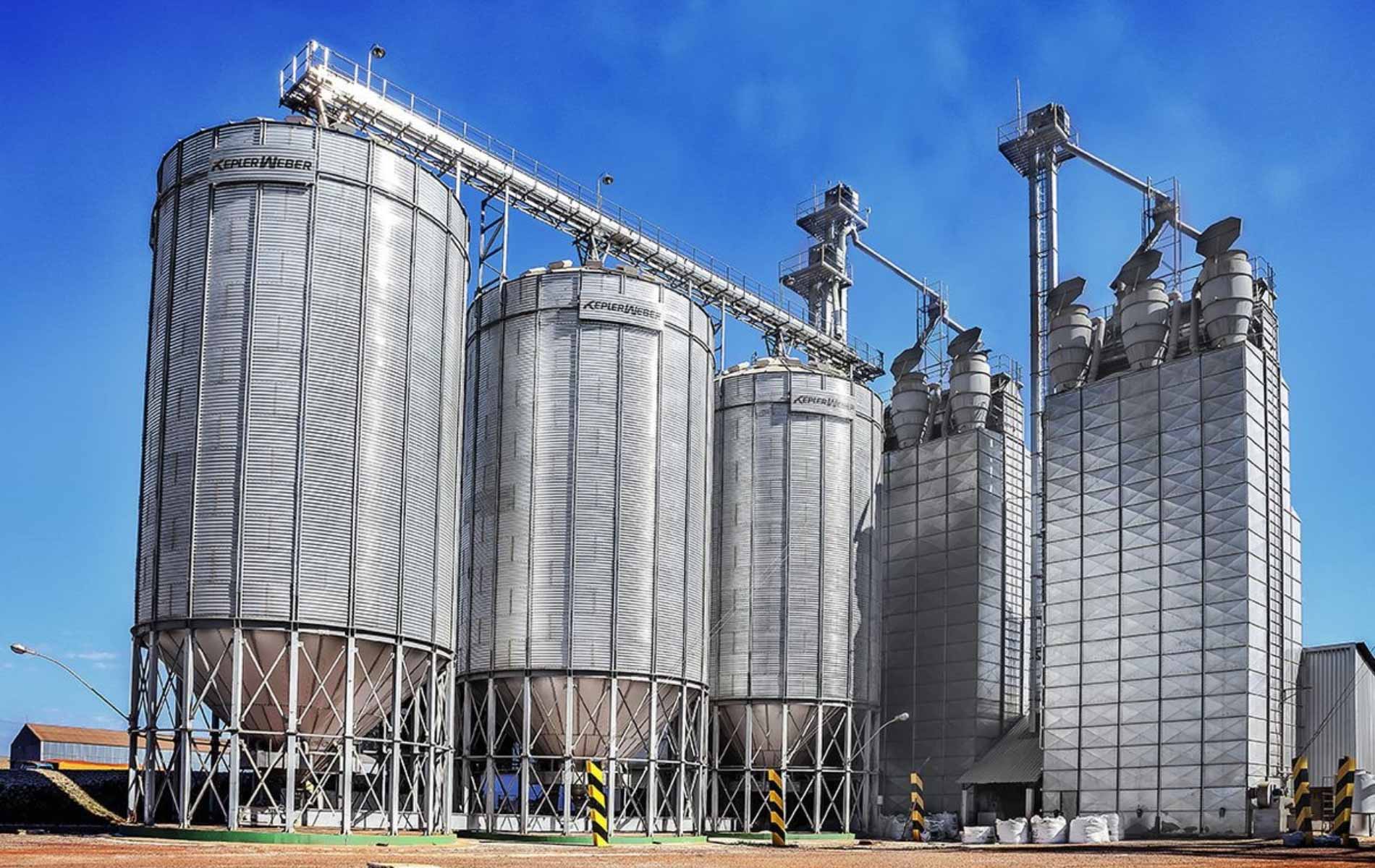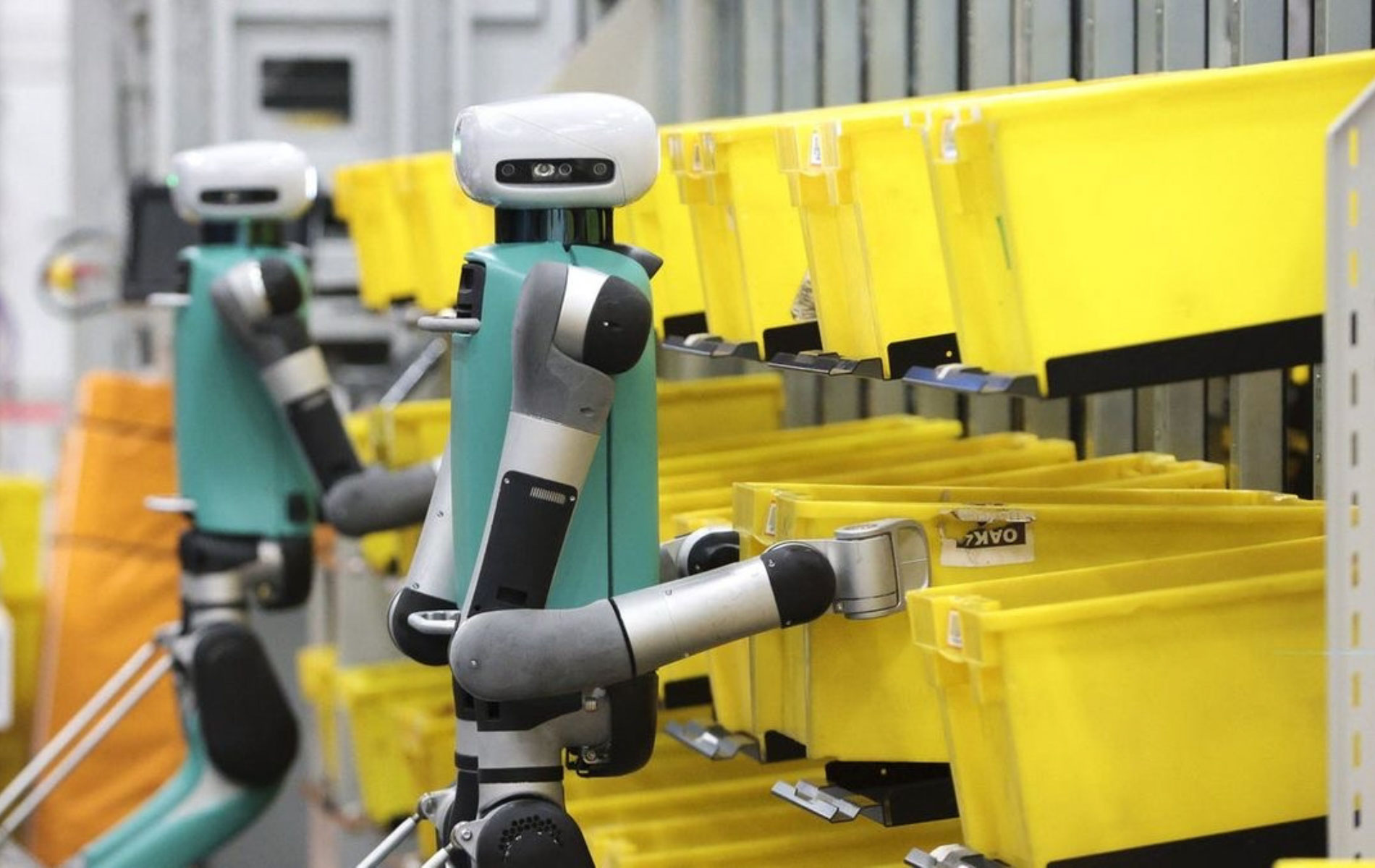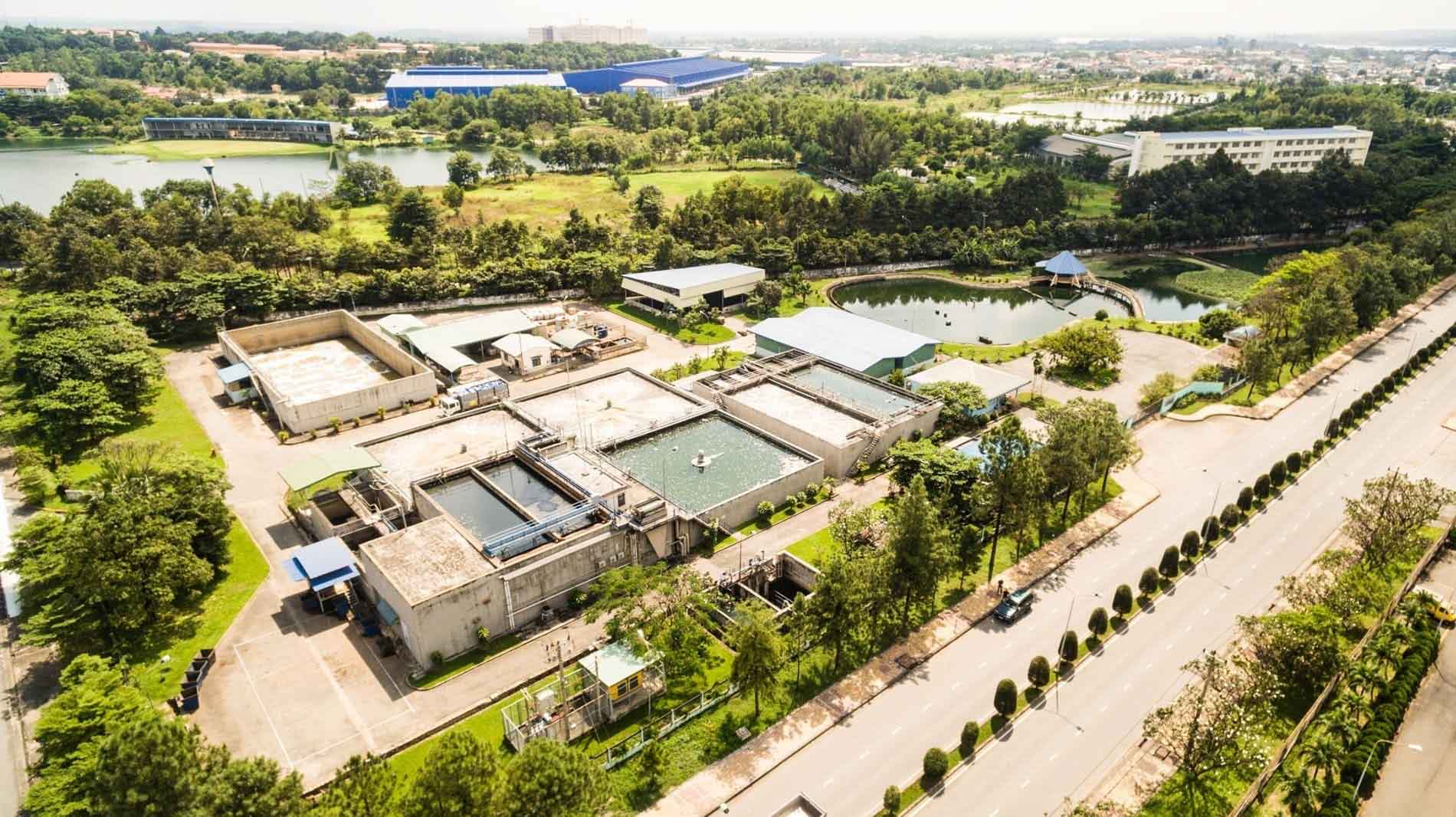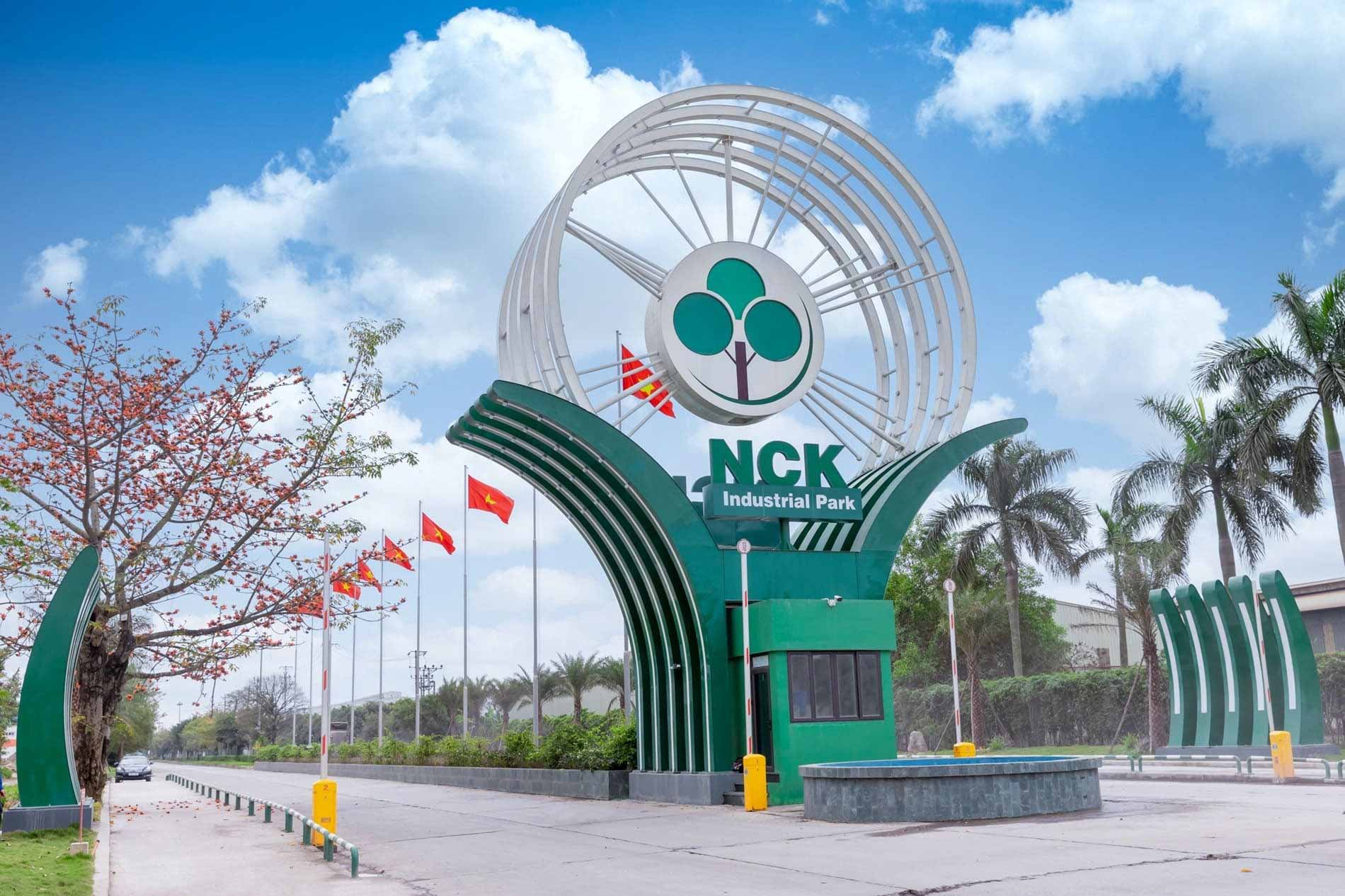An industrial cluster is a model that concentrates small and medium-sized production facilities within a planned area, aimed at utilizing shared infrastructure and optimizing investment costs. Amid the push for industrialization, industrial clusters have become an effective solution for localities to attract investment, expand production, and create jobs. In this article, KTG Industrial provides an overview of industrial clusters and the current landscape of their development in Vietnam.
What is an Industrial Cluster?
According to Clause 1, Article 2 of Decree No. 68/2017/NĐ-CP, an industrial cluster is a geographically defined area with no residential population, established to attract or relocate small and medium-sized enterprises (SMEs), cooperatives, and collaborative groups for production and business activities. These clusters serve the purposes of industrial and handicraft production [1].
Put simply, an industrial cluster is a centrally planned area where SMEs—often in the same or related industries—operate, such as in agricultural, forestry, aquatic product processing, or handicrafts. With an area under 75 hectares, industrial clusters help businesses share infrastructure, reduce costs, and promote local economic development.
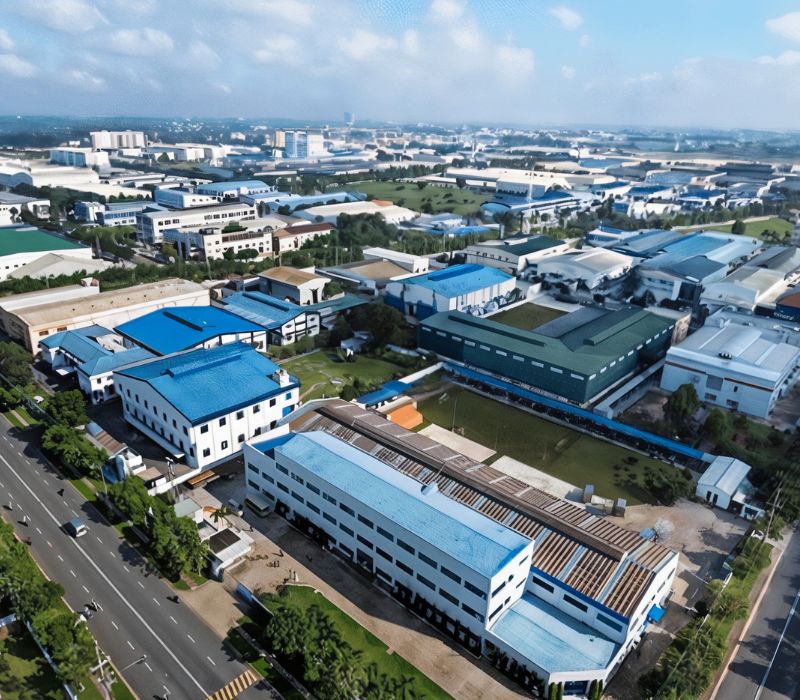
Industrial clusters contribute to promoting local economies.
Characteristics of industrial clusters
As of 2023, Vietnam had established 1,057 industrial clusters with a total area of over 38,000 hectares. Among these, 728 clusters are already in operation, attracting more than 14,300 projects and creating jobs for around 700,000 workers [2].
According to data from the Ministry of Industry and Trade, by 2025, Vietnam is expected to have 1,704 industrial clusters covering a total area of 58,123 hectares [3].
The occupancy rate of an industrial cluster refers to the percentage of industrial land that has been leased or approved for investment over the total industrial land area, as defined in Decree No. 32/2024/NĐ-CP. When preparing an investment report for cluster expansion, the occupancy rate must be included. To expand an industrial cluster, the occupancy rate must reach at least 60%, or the demand for industrial land must exceed the existing area [4].
Development plans for industrial clusters must be integrated into provincial planning, with clearly defined policies and solutions for management, synchronized infrastructure construction, and environmental protection, to conserve and effectively use resources [5].
In addition, businesses need to understand that industrial land area refers to the portion of land within the cluster allocated for lease, dedicated to industrial production and related services, as defined in the cluster’s detailed planning. This land is designated for industrial, handicraft production, and supporting services [6].
The land area for common technical infrastructure refers to the portion of land within the cluster reserved for building shared technical infrastructure works. This area is specified in the detailed plan and approved by the competent authorities [7].
Land Area Criteria for Defining an Industrial Cluster [3]:
- Industrial clusters generally cover an area from 10 to 75 hectares, depending on the socio-economic development orientation of each locality.
- For mountainous districts or craft village clusters, the minimum area can be 5 hectares to allow flexibility in planning and developing small-scale production.
- Industrial land area refers to the portion of land within the cluster planned for leasing or subleasing to enterprises for production and business activities. This is defined in the approved detailed planning by competent authorities.
Priority Investment Targets in Industrial Clusters:
- Production facilities that cause pollution and need to be relocated from residential areas.
- Enterprises that manufacture agricultural machinery and spare parts.
- Supporting industries listed in the national priority investment catalog.
- Consumer goods production using local raw materials and local labor.
- Processing industries for agricultural, forestry, and aquatic products.
Enterprises Operating Within Industrial Clusters:
- Industrial clusters mainly attract small and medium-sized enterprises (SMEs), cooperatives, and collaborative groups, typically characterized by:
- Modest production scale, easy layout and simple operations.
- Focus on light industry, handicrafts, and agro-forestry-fishery processing.
- Capability for collaboration and production linkage in value chains.
Functions of Industrial Clusters:
- Redistribute small-scale production facilities to reduce pollution in residential areas.
- Promote local production, leveraging local materials and creating rural employment.
- Prioritize sectors such as:
- Agricultural product processing
- Handicrafts
- Supporting industries for agriculture and domestic consumption.
Infrastructure Overview:
- Transportation: Convenient access to national highways, provincial roads, river ports, or seaports.
- Technical Infrastructure Includes:
-
- Internal roads
- Green space
- Water supply
- Wastewater treatment
- Solid waste management
- Fire protection system
- Public lighting
- Internal communication systems
- Administration and security facilities
- Some modern clusters also include:
-
- Administrative and service areas
- Housing for experts and workers
- Green spaces and landscaped areas for environmental protection
Role and Development Orientation:
- Serve as tools to drive local economic development, especially in rural and mountainous areas.
- Reduce pressure on major industrial parks by distributing industrial activity more evenly across the country.
- Align with the development of modern, eco-friendly clusters that support urbanization and improve quality of life.
- Contribute to job creation and local economic growth.
- Act as stepping stones for the development of larger industrial parks.
- Enhance competitiveness and promote industrialization and modernization nationwide.
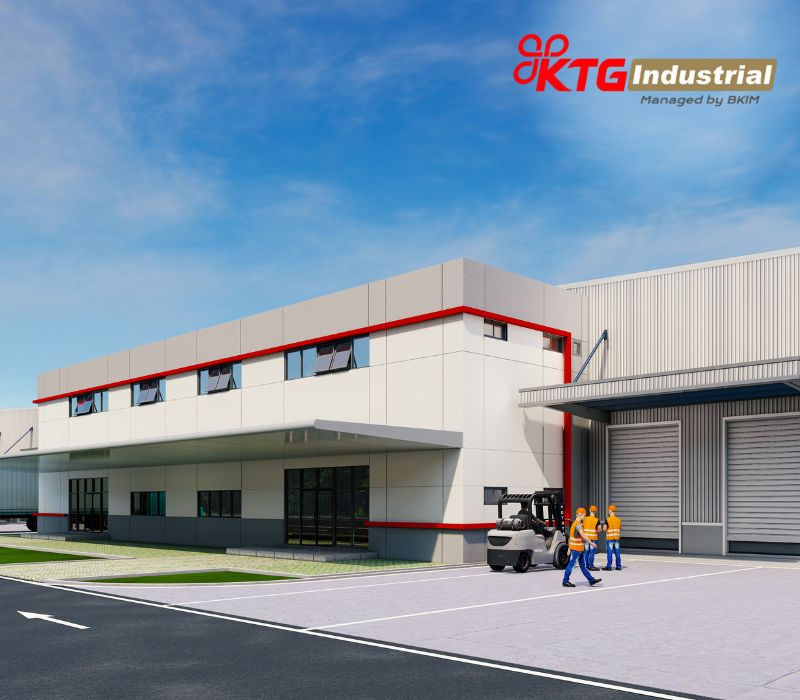
An industrial cluster covers an area ranging from 10 to 75 hectares.
Priority industries for investment attraction in industrial clusters
The priority industries for investment in industrial clusters are clearly defined in Decree No. 68/2017/ND-CP (amended by Decree No. 66/2020/ND-CP). These are sectors and industries encouraged for development within industrial clusters to promote sustainable growth, enhance land-use efficiency, and protect the environment [8].
Specifically, they include:
Industries required to relocate from residential areas
- Production and business facilities that cause or are at risk of causing environmental pollution in residential areas, urban zones, or craft villages.
- Relocating these facilities into industrial clusters helps better control pollution and ensures a healthier living environment for the community.
Manufacturing of agricultural machinery and equipment
- Includes the production of spare parts, assembly, and repair of machinery and equipment for agriculture.
- This sector plays a key role in modernizing agriculture, improving productivity, and enhancing the quality of agricultural products.
Supporting industries
- Includes the production of supporting industrial products listed in the Government’s priority development list such as: electronic components, automotive and motorcycle parts, new materials, etc.
- These industries help boost domestic production capabilities and reduce dependence on imports.
Consumer products using local materials
- Facilities producing consumer goods such as food, furniture, textiles, etc., that utilize:
-
- Local raw materials
- Local labor force
- This supports regional economic development and leverages native resources effectively.
Industries and products with local advantages
- Priority is given to traditional crafts, specialty products, or signature regional items.
- Examples include: Bát Tràng ceramics, bamboo and rattan products, local agricultural and aquatic processing…
Agro-forestry-fishery processing industry
- Helps consume raw materials for farmers, adds value to products, and reduces the export of unprocessed goods.
- Encourages the development of value chain models from raw material areas to processing and distribution.
In addition, production facilities using advanced technologies, applying scientific research results, and committing to environmental protection are also encouraged within industrial clusters. These contribute to green and sustainable economic development.
Legal rights and obligations of enterprises in industrial clusters
Enterprises operating in industrial clusters have the following rights and obligations [8]:
Rights:
- Land use and extension: Enterprises have the right to use and extend land use as regulated by the Land Law. They may sublease land, factories, warehouses, and assets on the land.
- Use of infrastructure: Enterprises can use technical infrastructure and public service facilities within the cluster for a fee.
- Infrastructure investment: Enterprises are allowed to contribute capital or provide advances for the construction of industrial cluster infrastructure under agreements with the infrastructure investor.
- Support for recruitment and training: Enterprises receive support in recruiting and training labor for production and business operations.
- Incentives and support policies: Enterprises may benefit from various government incentives and support programs.
Obligations:
- Compliance with contracts and investment commitments: Enterprises must implement their investment projects and conduct operations in accordance with agreements signed with infrastructure developers and their investment registration certificates.
- Compliance with laws and regulations: Enterprises must fulfill obligations related to business registration, finance, environmental protection, occupational safety, and other legal requirements such as fire safety and public order.
- Local labor engagement: Enterprises are expected to actively engage in recruiting local workers, giving priority to policy-beneficiary groups and households displaced for industrial cluster development.
- Payment of fees: Enterprises must pay fees related to infrastructure use, public services, and other utilities as agreed with the infrastructure developer.
These rights and obligations are designed to ensure the efficient and sustainable operation of industrial clusters, while also supporting local economic development.
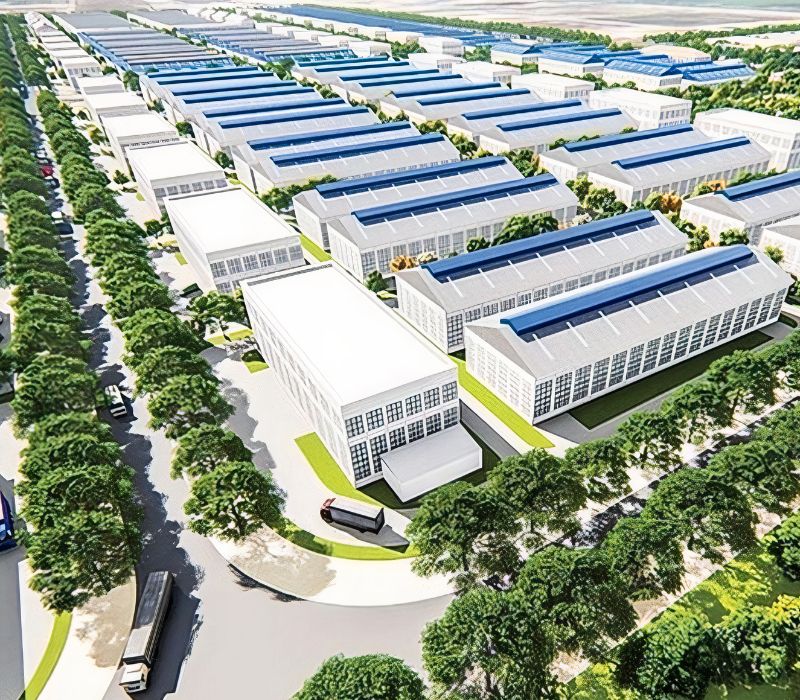
Industrial clusters in Vietnam are increasingly developing
Industrial cluster development in Vietnam: an overview
By 2025, Vietnam is expected to have 730 operational industrial clusters, covering a total area of 22,336 hectares across 57 provinces. However, 6 provinces still have no active clusters. A total of 955 clusters have had their detailed plans approved, and 644 clusters have had infrastructure investment projects approved with a total capital of over VND 115.2 trillion [9].
Key Challenges in Development:
- Slow Infrastructure Development: Especially in spontaneously formed clusters before 2009.
- Lack of Wastewater Treatment Systems: A significant number of clusters still do not have proper wastewater treatment infrastructure.
- Difficulties in Attracting Investment: Limited basic infrastructure and tight public budgets hinder investment attraction.
Northern region
The Northern region currently leads the country in both scale and growth rate of industrial clusters. According to plans for 2025, this area will form approximately 765 industrial clusters, with a total area estimated at 24,395.2 hectares. By the end of 2020, hundreds of clusters had been established and put into operation, many of which have infrastructure invested by private enterprises.
One standout locality is Bac Giang, with:
- 45 industrial clusters approved as of April 2022, covering about 1,734 ha
- Total infrastructure investment reaching 10,500 billion VND
- Among them, 31 clusters are officially operating with an average occupancy rate of 64.5%
- Attracted 230 projects, with total registered capital exceeding 32,765 billion VND
- Created jobs for more than 45,000 workers
Additionally, Bac Ninh has also been rising prominently. By 2022, it had 31 industrial clusters and 16 industrial parks with a total area of 3,697 ha, accounting for 11% of the province’s total land area. These industrial parks have attracted investment from 38 countries, mainly in processing and manufacturing industries, especially electronics. Bac Ninh benefits from a strategic location near Hanoi, as well as supportive policies that foster a favorable business environment.
Alongside continuous growth in other provinces, in 2023 Hai Phong further expanded investment opportunities by adding two new industrial clusters in the plan: Trang Due and Le Thien-Dai Ban clusters, totaling nearly 120 ha. These are ideal destinations for high-tech industries such as mechanical engineering, electronics, and supporting industries.
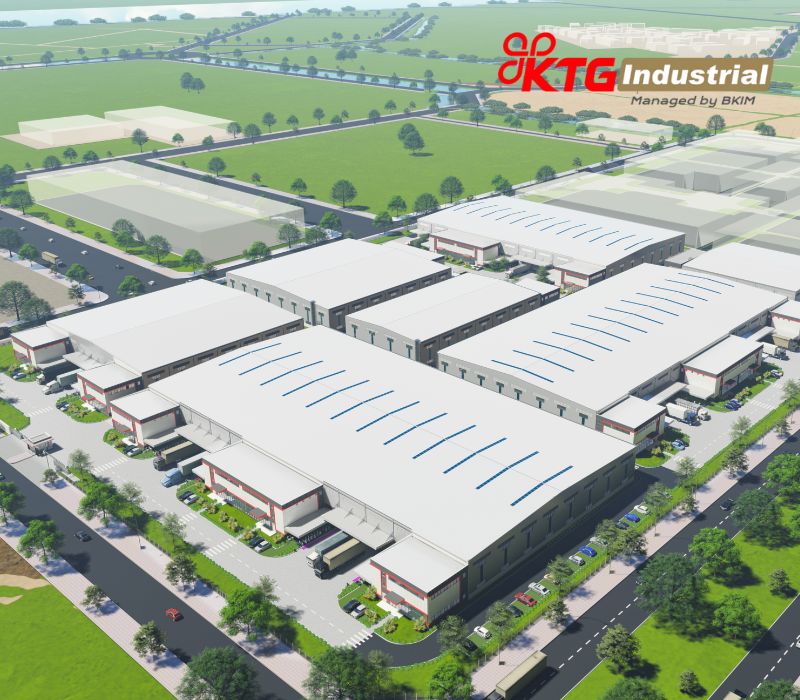
Industrial clusters are proving effective in many localities.
Central Region
The Central region ranks second nationwide in total industrial cluster area, with approximately 15,864.1 hectares. This area has a very high rate of state investment in infrastructure, specifically:
- 74.2% in the Central Coastal region
- 82.9% in the Central Highlands
Binh Dinh is a notable province with 46 industrial clusters covering 1,639 ha, among which 40 clusters have been or are currently undergoing land clearance and infrastructure investment. By 2025, the province aims for a 75-80% occupancy rate in operating clusters.
Industrial clusters in Binh Dinh have attracted 440 small and medium enterprises with a total registered capital of 1,230 billion VND and realized capital of 843 billion VND. Enterprises within these clusters contribute about 16% of the province’s total annual industrial output value and provide stable employment for around 11,000 local workers.
Southern Region
The total industrial cluster area in the South currently reaches about 14,586 ha, with most projects invested by the private sector. Specifically:
- 78.5% of clusters in the Southeast region
- 71.7% in the Mekong Delta region led by private investors
The industrial real estate market in this region is highly competitive, reflected by:
- An average occupancy rate of 90%
- Average land rental price of about 159 USD/m² per lease term
Industrial clusters in the South are becoming attractive destinations for domestic businesses, especially in processing agricultural, forestry, and aquatic products, as well as textiles.
Binh Duong plans to develop 4 supporting industrial clusters (each 75 ha), including one specializing in mechanical engineering, and also plans to expand the Bac Tan Uyen 1 industrial park. The province’s supporting industry still heavily relies on imported raw materials, with a low localization rate. Binh Duong currently has 2,277 enterprises related to supporting industries. To boost this sector, the province is accelerating business support, prioritizing the development of value-added products, completing raw material supply chain planning, and attracting new investments.
Conditions for Establishing and Expanding Industrial Clusters
According to Decree No. 32/2024/ND-CP, to establish or expand an industrial cluster, the following specific conditions must be met:
Conditions for Establishing an Industrial Cluster [10]:
- The industrial cluster must be included in the list of industrial clusters approved at the provincial level and have land funds suitable to the district-level land use planning.
- There must be an enterprise, cooperative, or organization with legal status and sufficient investment capacity to propose to be the infrastructure investor.
- In case the locality already has industrial clusters, the average occupancy rate must be above 50% or the area of industrial land not leased out must not exceed 100 hectares.
The application dossier for establishing an industrial cluster includes [2]:
- A proposal from the District People’s Committee.
- A request document from the infrastructure investor.
- Legal documents and financial capacity of the investor.
- Investment report and documents proving capacity.
Conditions for Expanding an Industrial Cluster [10]:
- The total area after expansion must not exceed 75 hectares and must have land funds suitable to the district-level land use planning.
- There must be a legal investor with sufficient capacity to invest in building technical infrastructure.
- The cluster must meet at least one of two criteria: either have an occupancy rate of 60% or higher, or the demand for leased land exceeds the current available area.
- Essential technical infrastructure works must have been completed and put into use, including internal roads, water supply systems, and wastewater collection and treatment systems (according to the approved detailed planning).
Frequently asked questions
Which is larger: industrial cluster or industrial park?
Industrial parks have a larger scale than industrial clusters because they are not specifically limited in area by law. Industrial clusters, on the other hand, are limited in size from 10 hectares up to a maximum of 75 hectares, except for special cases such as clusters in mountainous areas which can have a minimum size of 5 hectares.
What is the difference between industrial clusters and industrial parks?
| Criteria | Industrial Park | Industrial Cluster |
| Definition | A defined area specializing in industrial production. | An industrial – handicraft production area without a resident population. |
| Area | No specific limit. | 10 – 75 hectares (mountainous/village industry: minimum 5 hectares). |
| Types of enterprises | Mainly large enterprises with large-scale industrial activities. | Small and medium enterprises, cooperatives, and cooperatives groups. |
| Industries | Industry and industrial support services. | Production of spare parts, consumer goods, processing of agricultural, forestry, and aquatic products, traditional industries. |
| Export processing enterprises | Allowed to operate within industrial parks. | Not allowed to operate in industrial clusters according to regulations. |
| Planning | Must be included in planning approved by the Government. | Must be included in specific provincial and district planning, with conditions on occupancy rate, technical infrastructure, etc. |
Conclusion
In reality, industrial clusters have proven effective in many localities, especially in redistributing production, reducing pressure on large industrial parks, and supporting small and medium-sized enterprises. However, alongside these achievements, issues remain such as uneven occupancy rates, lack of regional linkage, and limited technical and environmental infrastructure. For industrial clusters to truly become a driver of sustainable development, specific supporting policies are needed, from planning to implementation, as well as promoting public-private partnerships in infrastructure investment and operational management.
References
[1] Nam. The nao la cum cong nghiep, khu cong nghiep? Su khac nhau giua khu cong nghiep voi cum cong nghiep la gi? Thuvienphapluat.vn. Published July 24, 2023. Accessed April 24, 2025. https://thuvienphapluat.vn/phap-luat/ho-tro-phap-luat/the-nao-la-cum-cong-nghiep-khu-cong-nghiep-su-khac-nhau-giua-khu-cong-nghiep-voi-cum-cong-nghiep-la-722960-96604.html
[2] Nam 2023, ca nuoc thanh lap 1.057 cum cong nghiep. Thuenhanuoc.vn. Published 2023. Accessed April 24, 2025. https://thuenhanuoc.vn/tapchi/chuyen-muc/doanh-nghiep-thi-truong/f7087e33-78db-44e8-adee-38c8218398a6
[3] Nghien cuu khoa hoc – Tap chi cong thuong. Den nam 2025 ca nuoc se co 1.704 cum cong nghiep. Tapchicongthuong.vn. Published 2025. Accessed April 24, 2025. https://moit.gov.vn/tin-tuc/phat-trien-cong-nghiep/dinh-huong-den-nam-2025-ca-nuoc-co-1.704-cum-cong-nghiep.html
[4] An NB. Ty le lap day cua cum cong nghiep la gi? Bao cao dau tu mo rong cum cong nghiep co bao gom noi dung ve ty le lap day cua cum cong nghiep khong? Thuvienphapluat.vn. Published June 10, 2024. Accessed April 28, 2025. https://thuvienphapluat.vn/phap-luat/ty-le-lap-day-cua-cum-cong-nghiep-la-gi-bao-cao-dau-tu-mo-rong-cum-cong-nghiep-co-bao-gom-noi-dung–297381-157198.html
[5] thuvienphapluat.vn. Nghi dinh 32/2024/ND-CP ve quan ly, phat trien cum cong nghiep. THU VIEN PHAP LUAT. Published January 10, 2025. Accessed April 28, 2025. https://thuvienphapluat.vn/van-ban/Thuong-mai/Nghi-dinh-32-2024-ND-CP-quan-ly-phat-trien-cum-cong-nghiep-300484.aspx
[6] Thu Vien Nha Dat. The nao la dien tich dat cong nghiep? Dien tich dat cong nghiep duoc dung voi muc dich gi theo Nghi dinh 32? Thu Vien Nha Dat. Published April 8, 2025. Accessed April 28, 2025. https://thuviennhadat.vn/phap-luat-doi-song/the-nao-la-dien-tich-dat-cong-nghiep-dien-tich-dat-cong-nghiep-duoc-dung-voi-muc-dich-gi-theo-nghi–12131-657294.html
[7] Dien tich xay dung he thong cong trinh ha tang ky thuat chung cua cum cong nghiep la gi? ThuVienPhapLuat.vn. Published June 3, 2017. Accessed April 28, 2025. https://thuvienphapluat.vn/hoi-dap-phap-luat/2DB6F-hd-dien-tich-xay-dung-he-thong-cong-trinh-ha-tang-ky-thuat-chung-cua-cum-cong-nghiep-la-gi.html
[8] Truong M. Cum cong nghiep la gi? Quy dinh ve cum cong nghiep. Cong ty Luat TNHH Minh Khue. Published December 13, 2022. Accessed April 24, 2025. https://luatminhkhue.vn/cum-cong-nghiep-la-gi
[9] Dinh huong den nam 2025 ca nuoc co 1.704 cum cong nghiep. moit.gov.vn. Published July 12, 2021. Accessed April 28, 2025. https://moit.gov.vn/tin-tuc/phat-trien-cong-nghiep/dinh-huong-den-nam-2025-ca-nuoc-co-1.704-cum-cong-nghiep.html
[10] baochinhphu.vn. Dieu kien thanh lap, mo rong cum cong nghiep. baochinhphu.vn. Published March 15, 2024. Accessed April 24, 2025. https://baochinhphu.vn/dieu-kien-thanh-lap-mo-rong-cum-cong-nghiep-102240315171827139.htm


